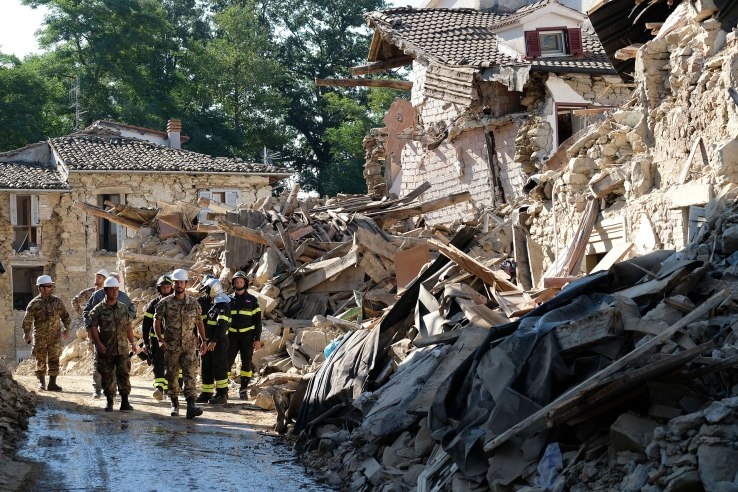
The US Geological Survey (USGS) is working with universities to develop ShakeAlert, an early warning system for earthquakes that can alert the public 10 seconds before an earthquake occurs. ShakeAlert is currently testing in California, Oregon, and Washington.
"The system in this test is very similar to the system operated by the University of Naples in Italy in the Epina region," said Richard Allen, one of the ShakeAlert project managers.
This Wednesday, a 6.2-magnitude quake occurred in central Italy. According to the latest media reports, the death toll has risen to 281.
Allen said that ShakeAlert is not an "earthquake forecast" system, because when we say "forecast", it usually means that we know it will happen "on which day." We cannot currently predict earthquakes. Most earthquake scientists believe that "earthquake prediction" is not yet realized in the foreseeable future.
ShakeAlert was able to issue an alert just before the quake struck. People received relevant information on their cell phones and could take protective measures before severe earthquakes hit. The development of this system has been going on for 10 years.
The earthquake did not happen instantaneously. It needed some time to reach the ground. Researchers buried a lot of sensors underground to form ShakeAlert's network of seismic sensing. Sensors record ground motion and transmit data to the University of California, Berkeley, USGS, or the California Institute of Technology. The denser the distribution of these sensors, the better the performance of the system.
Allen said: “In the San Francisco Bay Area, sensors are 10-20 kilometers apart, but not in other parts of California.†There are about 550 sensors in California, including about 200 in the San Francisco Bay Area. There are about 200 Los Angeles and the rest are in other parts of California. The entire network of 550 sensors is the system that is currently being tested.
It is reported that the U.S. federal and state governments have started to fund the construction of this system. The California government has allocated 10 million U.S. dollars and the Oregon government has allocated 1 million U.S. dollars. On August 15th, USGS announced that it provided US$3.7 million in funding for the six universities related to the ShakeAlert project. These six universities are: California Institute of Technology, Central Washington University, University of California, Berkeley, University of Oregon, University of Washington, and University of Nevada, Renault.
According to USGS estimates, if the ShakeAlert system is to be built across the entire West Coast, approximately US$38.3 million will be required for funding, and an additional US$16.1 million will be invested annually to maintain the operation of the system.
“We hope to send people alarm messages through mobile phones and hope that in 2018 there will be a local area-specific ShakeAlert mobile phone that can be used by the public,†said Allen.
Via TC
Extended reading:
After the earthquake in Italy, these disaster relief robots may help
No need to search, Google can tell you in real time about the earthquake situation
